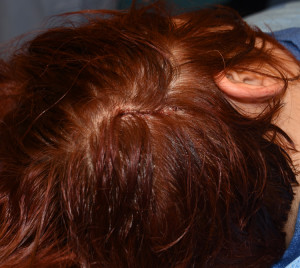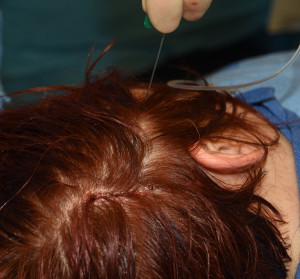In skull implant surgery, the limiting factor in terms of the amount of augmentation obtained is the stretch of the scalp. With the use of 3D CT scans and computer designing, any size and shape of skull implant can be made. But just because it can be made does not mean that it can be safely inserted or avoid long-term complications. The key is adequate scalp tissue to accommodate the size of the implant and not over stretch the scalp tissue over time.
The exact size and dimensions of a skull implant that the scalp tissues can tolerate will vary amongst different patients. There is no absolute thickness number in millimeters that is the maximum for any patient. But I use a general rule that any skull implant thicker than about 10 to 12mms may make the scalp closure tight or raise concerns about tissue thinning long term.
For those patients that would like larger amounts of skull augmentation, the concept of increasing the amount of scalp tissue to accommodate the implant must be done. This is achieved through the historic and well known use a scalp tissue expander. But unlike how scalp tissue expanders are used for more typical cases of scalp reconstruction, there are some differences when used as a first stage preparation for larger skull implants.



Usually the needed scalp tissue expander inflations are completed in four to six weeks after the expander placement. Because the amount of scalp expansion is not great, its detection is very minimal in women who wear their hair long.
Dr. Barry Eppley
Indianapolis, Indiana


